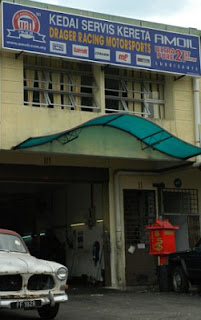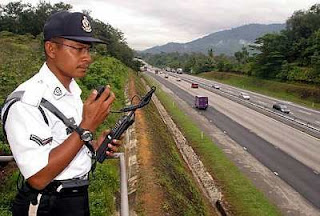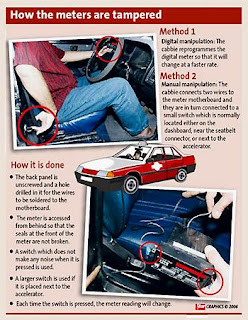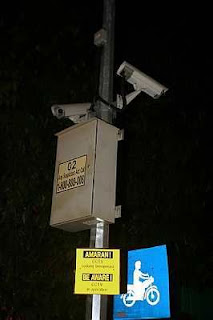1. AUTO FINANCE /Refinance. Car/MPV/SUV Van for Cash. Vehicle up to 12years. Name & NCB remain. Fast approval & low int. Fair Deal (Arab M'sian Credit Authorised Dealer). 012-313 6699 Badrul --27/3/2007
2. LOAN REFINANCING. Remain Name&NCB,fast approva-l, all type of cars,vans&lo-rry. 012-6055011/ 012-6335515
3.AUTO REFINANCE (AMCB) remain name&NCB,90% loan, tenor 7-9yrs,car&van. 410889 81/2,Rizal 016-3708192,Alex 0 12-3083528,Fauzi 019-3143601
4.CAR FINANCING. Up to 16 years old. Genuine customer only. Call Man 03 - 6187 1160 / 013 - 352 2890 now!!!
5. REFINANCE (YOUR Car/commercial vehicle for cash) No transfer of name & NCD remains. Immediate cash payment. 24 hrs approval for Govt servant. Low interest rate & charges. Authorised dealer for Arab - Malaysian Credit. Khoo 012-202 3388 / 019-950 9988. Angeline 012-286 3343
6. AUTO FINANCE /Refinance. Car/MPV/SUV Van for Cash. Vehicle up to 12years. Name & NCB remain. Fast approval & low int. Fair Deal (Arab M'sian Credit Authorised Dealer). 012-314 9966 Zarina
7.AUTO REFINANCE Scheme 24 hours disbursement, Ownership & NCD remains. Lower monthly installements. Low interest rate, repayment up to 9 years. Financing up to 12 years old vehicle. Contact Nisha 012-3922947, Jeeva 012-3298312, Sariful 017-2096877, Off. 03-2691
Monday, March 26, 2007
Boost up with Mr Turbo

Meet Sang. Turbo Sang. He makes cars go faster. To many hot rod enthusiasts, that’s the only name they know him by.
Woon Keam Sang, 56, likes it that way. It’s a catchy monicker that sells what he’s good at – installing turbochargers and tuning engines to extract maximum performance.
The man is quite handy with superchargers, too. He has been doing what he loves since the 1980s, and in the process, putting a grin on customers’ faces.
As forced induction devices, turbochargers and superchargers compress air flowing into the engine. Suffice to say more air – and fuel – stuffed into the cylinders produce a bigger bang for greater power.
A turbocharger, however, is run by exhaust gases driving a turbine, while a supercharger gets its power from the engine’s crankshaft via a belt or chain. The usual boost from either device is 0.5 bar, which boils down to a 30% to 40% power gain after innate inefficiencies are factored into the equation.
A turbocharger, however, is run by exhaust gases driving a turbine, while a supercharger gets its power from the engine’s crankshaft via a belt or chain. The usual boost from either device is 0.5 bar, which boils down to a 30% to 40% power gain after innate inefficiencies are factored into the equation.
Woon, by his own admission, is a self-taught expert.
“I wanted to challenge myself . . . see how far I could go. What I know now, I learnt from books and a lot of hands-on sessions.
“When you put in a super/turbocharger in a naturally aspirated car, you can see a great deal of difference in the performance.
“With a super(charger),” he says, “you get a lot of low-end torque. The power comes very early.”
On the other hand, a turbocharger is known for delivering boost when the engine is running at higher rpms. But it’s not all clear cut.
It comes down to the settings.
And the type of turbo used,” adds Woon.
“If you use a smaller turbo, it behaves like a super in the sense that the extra power comes in early, say at 2,000rpm, and goes off early as well.”
People go for turbos for various reasons and it’s not just to race or go fast. It can be safer for the driver if he has a slightly more powerful car especially when overtaking.
Citing a close call, Woon recalls: “I used to work on a lot of cars from out of town at one time, so I was bringing back a customer’s Nissan Sentra, fitted with an SR20 turbo, from Terengganu late one night. There were no lights on the road. I was overtaking a trailer.
“Suddenly, I saw a black object up ahead. It was then I realised a lorry was coming at me without its headlights on.
“I panicked. I was passing the trailer and it was too late to pull back. The only option was to speed up and luckily the car had the power to haul me out of danger.”
After every turbo installation, Woon says he always advises the customer to handle his car carefully until he is familiar with the new settings before going fast.
It takes a week to 10 days for a typical installation. A new turbo/supercharger, at RM5,000-RM6,000, is simply too expensive for the crowd Drager Racing Motorsports caters to, so it relies on reconditioned ones to do the job just as well. Each costs only a few hundred ringgit and comes with a limited warranty.
With greater boost comes a need for more modifications to ensure the car can handle the power safely and effectively.
For those who desire 1.5-1.8 bar, a major upgrade to such parts as the pistons, conrods, crankshafts, clutch, brakes and suspension is necessary.
Woon has read of some extreme installations overseas where the boost was as much as 4.2 bar.
Various configurations are possible including twin turbos or even a superturbo setup that comprises a supercharger and a turbocharger.
Woon, in fact, is currently working on a superturbo installation for a Satria GTi customer that should offer strong torque across a wide power band.
These days, Woon has passed the baton to his son Andy who carries on the family trade. But as long as he is able, Woon figures he will remain on the turbo scene which has become such a pivotal part of his world. – GEORGE WONG
Drager Racing Motorsports is located at 536, Jalan 20, Taman Perindustrian Ehsan Jaya, Kepong, Kuala Lumpur. They can be contacted at tel: 03-6275 4508 or 019-2636 927.
Smaller spare, bigger space
FEW things can deflate a motorist’s mood like, well, a flat tyre. Fortunately, punctures don’t happen frequently these days, thanks to improvements in tyre technology and roads. (I’ve had just two in the past 10 years, the last one over four years ago.)
When it comes to shopping for a new car, consider the factors that Malaysians deem important – style, price, resale value, prestige, fuel economy, colour, comfort, safety, low maintenance, etc. But do you know of anyone choosing a car because it has a great spare tyre?
Danger 

That may change if the Consumer Association of Penang (CAP) has its way. On Thursday its president, S.M. Mohamed Idris, claimed that the temporary use spare tyres that many cars are equipped with today pose a danger if they were not used in accordance with the car manufacturers’ instructions.
He has a point. Temporary use spare tyres and wheels are narrower and lighter than the other four standard wheels and tyres. So, they are not as strong, nor are they as good in all the other areas that tyres are expected to be good in, including grip and resistance to damage from road hazards.
There are two types of space-saver tyres – full size temporary spares that are narrower but have the same height as the standard tyres, and compact temporary spares that are not only narrower but smaller in diameter as well.
The latter pose an additional risk because a car will end up having one tyre smaller than the other three, which could affect stability.
Most European and many Japanese cars now come with space-savers while the popular local cars that use them include the Proton Waja and Savvy and Perodua's Myvi.
So, why would safety conscious carmakers specify such wheels if they are potentially dangerous?
More space, less waste
The primary aim of space-savers is to maximise space and minimise weight, the latter being a significant factor in reducing fuel consumption.
In coming up with specifications, the challenge that car designers face is to find the optimum balance between space that is usable every day and fuel economy that is beneficial every minute that the vehicle is running – and a spare tyre that is likely to be needed only once or twice in several years.
“The benefit that space-saver tyres bring is that they provide greater luggage capacity and improve flexibility of the interior space of vehicles,” says Ford Malaysia managing director Michael Pease.
“Space-saver tires have been used and approved by many (car) manufacturers globally for more than a decade now. When these tyres are used in accordance with manufacturer's specification, they have been demonstrated to be reliable and dependable.”
The key point is “used in accordance with manufacturer’s specification.”
Alternatives
There are other solutions to the perennial problem of punctures.
BMW, for example, has decided that the spare tyre is obsolete and is working towards offering cars fitted only with extended mobility or “run-flat” tyres that can be driven on even when punctured. Some other manufacturers offer these tyres as options.
When engineers invest so much time, effort and money to shave “mere grammes” from hundreds of components, it is absurd to lug around 20kg or so of spare tyre that’s rarely needed, according to BMW Group Malaysia managing director Wolfgang Schlimme.
Run-flats sound like the ideal way to go but they have limitations, too. They can be used only on cars equipped with an onboard tyre pressure monitoring system (otherwise, the driver may not be aware when a tyre is punctured).
While BMW insists that its suspension systems are tuned for run-flats, many drivers still feel that standard tyres offer a more comfortable ride.
There are also constraints on how fast and far run-flats can run without air, and the ultimate put-off may be that they cost 50-100% more than comparable conventional tyres.
Another option is some kind of temporary repair or sealing system, and inflation using either an electrically operated pump or compressed air and sealant stored in canisters.
These, too, have disadvantages; the tyre can be too severely damaged to re-inflate, or a simple valve failure can leave you stranded. The canisters have a finite lifespan, too.
The best may be the run-flat but, as with all good things, it comes at a price that many can’t or won’t pay. The cheapest in the long run is probably the space-saver, used appropriately and checked regularly.
Monday, March 5, 2007
Reduced fines for certain traffic offences only

FOR the habitual traffic offenders, there was joy when the police announced its decision to reduce fines.
However, the Transport Ministry objected to the idea and the Cabinet ordered the cops to reinstate the old fines.
The latest is that a compromise has been reached between the cops and the ministry to allow reduction for minor and not-so-dangerous offences only, according to this report filed by The Star's Sim Leoi Leoi. Read on.
PUTRAJAYA: There will be no reduction in compounds for five serious traffic offences — speeding, queue jumping, beating traffic lights, overtaking on a double line and driving on the emergency lane.
Transport Minister Datuk Seri Chan Kong Choy said the Road Transport Department (JPJ) and police had agreed that there should be no compound reduction on these offences, which posed a danger to other motorists.
He said this after a meeting with officials from JPJ, the Road Safety Department, the police, the Internal Security Ministry and City Hall here yesterday. It was the first meeting to be held after last Wednesday’s Cabinet decision to postpone a proposal by the police to slash traffic compounds by as much as RM200.
The police had earlier insisted that it had the power to reduce the compounds without having to consult the Transport Ministry.
Chan said the authorities would meet later to streamline the rates of compounds for other offences such as illegal U-turns and parking, wrong-doings involving driving licences and the non-wearing of helmets by motorcyclists.
“We agreed that the streamlining of these rates would involve some form of reduction. However, we decided there should be no reduction for the five serious offences, as they pose a danger to other motorists,” he added.
“It’s important that the right message is conveyed and that drivers must be disciplined regarding these five offences.”
At present, JPJ’s compound rates for traffic offences are higher by as much as RM100 than those meted out by the police.
Chan said both the JPJ and the police had two weeks to come up with the new compound rates for other offences which he would submit to the Cabinet for approval.
Later, when approached, newly-appointed Inspector-General of Police Tan Sri Musa Hassan said the motive behind the initial proposal to slash traffic compounds by the police was good.
“But the implementation was not right,” he conceded, insisting there had been “no breakdown in communication” between the different ministries.
Taxi Cheat

HAVE you ever take a ride in a taxi and felt that the meter was going faster than the taxi itself?
Well, The Star did a bit of legwork and got a cabbie to confess to the scam perpetrated by his dishonest fellow drivers.
According to the report http://www.thestar.com.my/news/story.asp?file=/2006/9/24/nation/15529061&sec=nation&focus=1, two methods are used to fleece unsuspecting commuters.
One way is to reprogramme the digital meter so that the fare will change at a much faster rate, and the other is install a hidden switch that will increase the fare whenever it is pressed by the taxi driver.
The life of a taxi driver may be tough but should this be justified through cheating innocent consumers?
We are watching you

IF you want to commit a traffic offence next time, just remember to smile, as there will be somebody watching and recording the entire episode.
Under the Transport Ministry's Automated Enforcement System project, more than 700 surveillance cameras will be set up at strategic points like traffic light junctions, on tall buildings in all cities round the country, and at accident-prone roads and highways.
The project, which has been approved by the Cabinet, is aimed at enforcing traffic regulations, and reducing accidents and fatalities.
Under the Transport Ministry's Automated Enforcement System project, more than 700 surveillance cameras will be set up at strategic points like traffic light junctions, on tall buildings in all cities round the country, and at accident-prone roads and highways.
The project, which has been approved by the Cabinet, is aimed at enforcing traffic regulations, and reducing accidents and fatalities.
More on the story from The Star's Ng Si Hooi on this link http://thestar.com.my/news/story.asp?file=/2006/9/27/nation/15547766&sec=nation&focus=1
Would we be seeing more disciplined and courteous motorists from now on?
Citizen traffic wardens

CALLING all motorists and vehicle passengers with camera handphones or digital cameras.
The Road Transport Department wants you to become their citizen traffic wardens this festive season by sending pictures or videos of traffic offenders.
According to The Star report, the move may help increase road safety as motorists who are about to commit offences would think twice especially when there would be someone recording the event and forwarding the evidence to the authorities for action.
Looks like the level road courtesy on Malaysian roads is going to go up.
Subscribe to:
Posts (Atom)